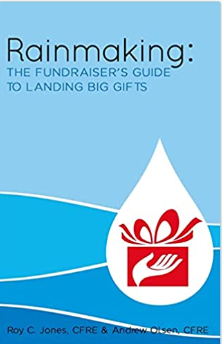“Robust direct mail programs drive up the retention and long-term value of new donors acquired online. Without the ability to become multichannel givers by renewing their support via direct mail, this group of donors would be worth far less. Other than monthly recurring giving programs, established direct mail programs are the best method for gaining repeat gifts from online acquired donors.” Target Analytics donorCentrics Internet and Multichannel Giving Benchmarking Report.
I must tell you it is hard for me to accept this trend in giving, namely, that your best donors give in more than one channel. However, if you take the time to unpack your reporting and then “mush” it back together from the donors perspective (not the silo’d report formats in your database), what you will see is that your best donors give 3 or 4 times a year and they are likely giving in multiple channels. The donors who give you the most money will give on line at least once, by direct mail at least once and in person at an event or with their own envelope (white mail) at least once.
It’s tough to teach an old dog like me new tricks. 30+ years ago when I was learning the fundraising business I sat through countless presentations that documented in dogmatic fashion that donors will only give in the channel in which they were acquired. So what this meant was if they gave by phone, you did not waste your time trying to get them to come to an event or give in the mail… you used the phone. If a donor was acquired by direct mail, you did not waste your resources calling them or emailing them… they would only give through direct mail campaigns.
As a matter of fact, when I went through the GOP’s national campaign academy in 1981, I remember Lee Atwater, who had just finished a successful Presidential campaign for Ronald Reagan saying, “Don’t waste your time trying to get volunteers to become donors and trying to get donors to volunteer. If a person gave by phone you call them again. If a person gave by mail you mail them again. If a person volunteers at an event you get them to the next event. Dadgumit (Lee may have used another expletive here for emphasis) your job is to listen to your people and re-engage them like they want.”
The colorful Lee Atwater was right about one thing that applies to our era today, “listen to your donors”. Donors today are telling you they want more options for giving. We call it integration, but it is critical to give your supporters multiple options for driving them to make their next gift. Trying to “silo” their giving to events, phone, internet/email, and direct mail is a huge mistake that will cost your charity or non-profits thousands of dollars.
Multichannel giving has become critical for non-profit development professionals. Even though most data base systems still only output giving by single channel, the best fundraisers are unpacking their reports to better target modern, multi-tasking donors.
Blackbaud’s Target Analytic division is helping to unravel the pieces information about multichannel donors. Here are just a few highpoints from a Blackbaud survey:
- Nonprofits have generally embraced multi-channel fundraising as an objective.
- The donors who engage in significant multichannel giving are new donors who make their initial gift online
- Your newly acquired online givers might switch to direct mail giving in subsequent years. Blackbaud’s reports says, “This is the group of donors for which multichannel giving is crucial for garnering repeat gifts and realizing true long-term giving potential.”
- The Internet is an increasingly important way to acquire donors, but it does not result in great retention.
- Even though most gifts, including new ones, are still received by direct mail; it is increasingly common for new donors to give their first gift online.
- Online-acquired donors trend younger and tend to have higher household income than mail-acquired donors.
- Online-acquired donors have much higher cumulative value over the long term than traditional mail-acquired donors. However, that long-term value varies depending on the original gift level, and whether the donor can be shifted from a one-time donor to a multi-time donor. Higher gift amounts can mask retention problems.
- Every year, large proportions of online-acquired donors switch from online giving to offline sources–primarily to direct mail. The reverse is not true. Very few direct mail givers become online givers later.
- Without the ability to become multichannel givers by renewing support via direct mail, online donors would be worth far less. When online-acquired donors move offline, they tend to do so soon, in their first renewal year. They then continue to give offline in similar proportions in subsequent years. Eventually, just under half of all online-acquired donors convert entirely to offline, primarily direct mail giving.


